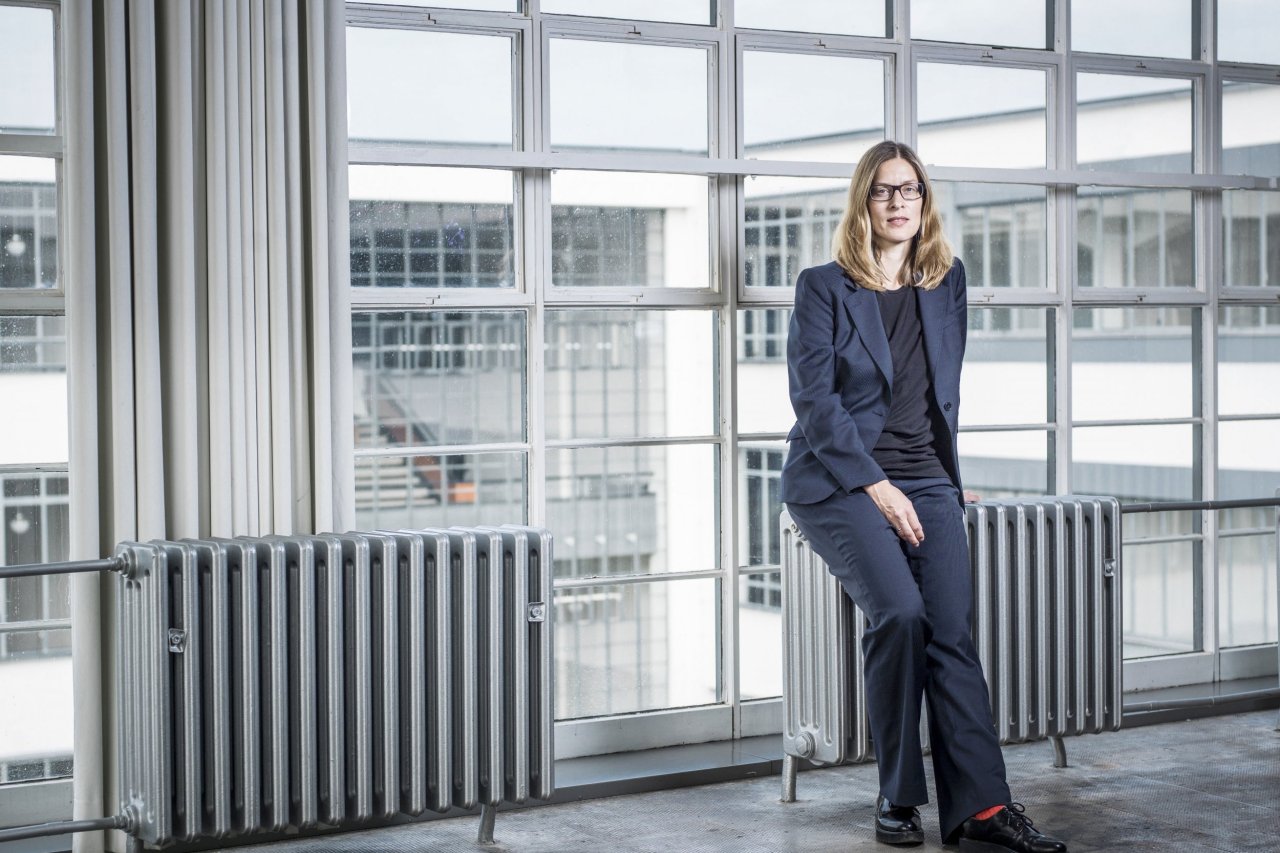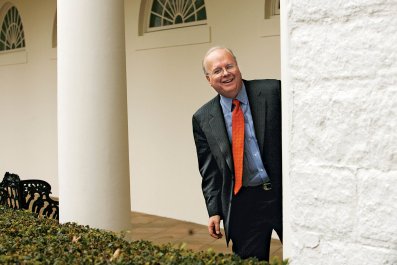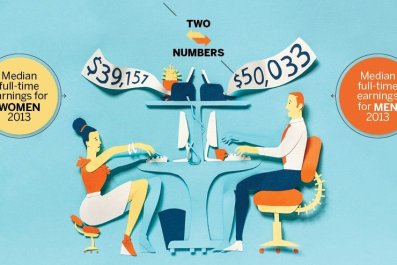Tubular-steel chairs are a regular accessory of modern life, so common that their design doesn't seem odd at all. Ditto built-in kitchens and forbidding high-rises. Bauhaus design already permeates modern society but now the new director of the Bauhaus, the artistic centre in Dessau that produced the global movement, aims to create a second Bauhaus movement and shake up 21st-century design.
"The amazing thing about Bauhaus is that it had such an international impact," reflects Claudia Perren, the Bauhaus Foundation's newly appointed director. "It wasn't a company or a brand. It was a multi-faceted school: architects, painters, actors. Such diversity is only possible in a school, and that's what I want to bring to the forefront again." Yes, she admits, there are famous architects and painters, "but they just represent one artistic position. Bauhaus, by contrast, features a wide artistic diversity."
Perren, a striking woman of 40, who left a teaching position at the University of Sydney to take up the post, has a point: today no artist, no company (not even Apple) could hope to spawn a global aesthetic and technological movement, influencing architecture, home design, typography and visual arts alike.
That, of course, is what Bauhaus did. By the time the artistic collective of teachers and students, assembled by architect Walter Gropius left conservative Weimar for Dessau – a small city some 90 minutes southwest of Berlin – in 1925, it had developed a working style that blurred the lines between different art forms and required students to manufacture their work in the Bauhaus's own workshops.
"Arts and technology, a new unity," Gropius decreed. The group, which included artistic celebrities including the painters Wassily Kandinsky and Paul Klee, the architect Ludwig Mies van der Rohe and the young designer-architect Marcel Breuer, lived, taught, studied and worked together in buildings designed according to Bauhaus principles: functional, straight lines, free from decoration. Klee played the violin and the Bauhaus had its own band. (The masters didn't completely obey their own functionalist teachings: Klee and fellow painter Lyonel Feininger collected antiquities, while Kandinsky decorated his home with Indian sculpture.)
The buildings – homes for the masters and apprentices in neat rows; the student dormitory with a canteen featuring Bauhaus steel stools; and the main buildings, with offices, ateliers and workshops – still stand, in good shape thanks to their Unesco Global Heritage status. During my recent visit, Dessau presented itself at its post-reunification best: tidy streets lined by renovated homes and new office buildings and populated by bike-riders, mothers pushing prams, and children making their first attempts on the skateboard. And yet, at the head of the Bauhaus Street, the iconic main building gives a slightly forlorn impression, seeming in need of the upkeep the ordinary dwellings down the street enjoy. Its Unesco status complicates maintenance a bit, but truth be told: the Bauhaus in Dessau, the foremost repository of the famous school, doesn't reflect Bauhaus's global influence.
That influence touches modern life from typefaces and kitchenware to apartment buildings. "Asian growth wouldn't have been possible without Bauhaus, because it introduced modernism and a new thinking in city architecture: prefab houses, steel, glass, concrete, layout of apartments and houses," observes Perren. "The way we build today is based on Bauhaus. So is the way we live in our homes. Let's say you have an Italian villa. Aesthetically it doesn't have anything to do with the Bauhaus, but think of the way you'd like to have your kitchen or your bathroom: in 90% of cases, people want the standards of modernism."
What this German architect has in mind is nothing less than a 21st-century Bauhaus, a new aesthetic emerging from Dessau with a population of 60,000. Starting next year, she plans to invite groups of promising students to spend several weeks at the Bauhaus – living, working and exchanging ideas the same way Gropius's disciples did 90 years ago.
"We're not a university but we can cooperate with them and offer courses here," she elaborates. "I'd like to see not just architecture students but design students, arts students, product design students, scenography students and theatre students come here as well – all the areas that were originally represented in Bauhaus."
We walk up to the large atelier where the original Bauhaus team developed their designs. It stands empty, ready for new talent. Because Unesco rules prevent tinkering with the building, it lacks air conditioning – a problem, Perren admits, given its enormous windows (another feature of the Bauhaus aesthetic). Still, designing in the same room as Breuer and Gropius is a compelling proposition.
Indeed, as an artistic laboratory, the Bauhaus is unique. While universities often encourage interdisciplinary studies, their mission is to teach and grant degrees. What if there's a new way of building, designing, drawing, performing that isn't being developed because arts resides in specialised companies and institutions? Perren thinks there is such a new way: a new Bauhaus, as it were. "Everybody has sat on a steel-tube chair, and we have this chair because Bauhaus dared to look beyond the four legs," she notes. "Today we have to ask ourselves the same question: what do we dare to do? What sort of new materials, new technologies do we have? How do we want to sit and how not? But it goes beyond the design of the chair, or the lamp, or the room. Just like Bauhaus thought about new forms of living and implemented them here in Dessau, we might also think about such intrapersonal connections."
When Germany's political conditions forced the Bauhaus to close in 1933 – it had briefly set up shop in Berlin – its members scattered around the world. Unwittingly, Nazi Germany thus propelled Bauhaus to even greater international prominence as its members went on to build, design and spread the gospel of functionalism. But now, with tubular-steel chairs and functionalist high-rises no longer avant-garde, Perren's artist collective will face the daunting task of creating a 21st century aesthetic of the same stature. With the chair having moved beyond four legs, perhaps it's time to move beyond the chair.
Her goal, says Perren, is to create a vibrant artist movement. And with a steady stream of up-and-coming artists coming in and out of Dessau, so her plan goes, the Bauhaus will regain plenty of its former glory. But mostly, suggests Perren, the time is ripe for a rethink of our everyday lives, and artists may be the ones best positioned to execute it. "The Bauhaus founders didn't want it to be an elite movement," she points out.
And Dessau, with little to offer by way of diversion, may offer just the kind of concentration necessary for this artistic exercise. Gropius's successor may, however, have to ban smartphones in the atelier. Otherwise tweeting and selfies might sabotage tomorrow's aesthetic before it's even put to paper. Come to think of it, they might map a paperless future.


























